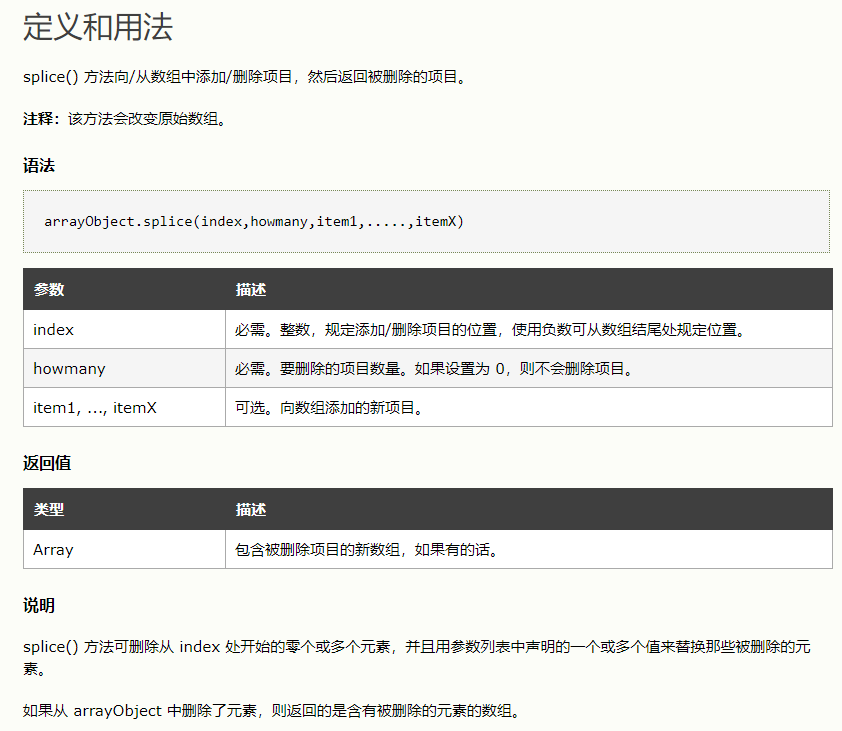

#CONST SPLICE JS INSTALL#
Today we are not going to install any dependencies, so we can go directly to the code. We don't want to make all countries visible though, so we'll create a pagination and divide the countries by pages according to the number of elements we want per page.Īt the end of the article I'll give you the link to the github repository so you can test the example. Please note that, if multiple elements are passed as parameters, they're inserted in chunk at the beginning of the object, in the exact same order they were. () has similar behavior to unshift (), but applied to the end of an array. The idea of today's application is to create a table that will contain a total of six rows, each of these rows will be a country. The unshift () method inserts the given values to the beginning of an array-like object. Like many other components of React, we can install a dependency that helps this process, but we always end up being limited in many ways and one of them is styling.įor this reason I decided to write this article, despite being a simple solution it is something that is easily extensible and customizable.

#CONST SPLICE JS HOW TO#
To learn more about JavaScript arrays and how to use them to store multiple pieces of information in one single variable, take a look at this guide.One of the behaviors that practically all of us have is going to the npm repository to choose a library that helps us in creating the pagination of our tables. To create a new array with a segment removed and/or replaced without mutating the original array, use toSpliced(). This method modifies the original array and returns the removed elements as a new array. The splice() method of Array instances changes the contents of an array by removing or replacing existing elements and/or adding new elements in place. It lets you change the content of your array by removing or replacing existing elements with new ones.

The Array.splice() method works in all modern browsers, and IE6 and above. The splice () method is a built-in method for JavaScript Array objects. To add new elements with Array.splice(), just set the deleteCount to zero and pass new items: const fruits = const removed = fruits. splice ( 1, 2, 'Cherry', 'Watermelon' ) Ĭonsole. You can also replace the removed items with the new one by using Array.splice(): const fruits = const removed = fruits. If the deleteCount is omitted, all the elements starting from start are removed from the array: const fruits = const removed = fruits. Here is example that uses Array.splice() to remove first two elements from the beginning of an array: const fruits = // remove first elements const removed = fruits. If no elements are specified, splice() will only remove elements from the array. The elements to be added to the array, beginning from start. In this case, you have to specify at least one new element. If deleteCount is 0 or negative, no elements are removed. deleteCount - An integer indicating the number of elements in the array to remove from start.start - The starting index for changing elements in the array.Here is the syntax of Array.splice(): array. Array.splice() returns the removed elements (if any) as an array. This method modifies the contents of the original array by removing or replacing existing elements and/or adding new elements in place. In JavaScript, the Array.splice() method can be used to add, remove, and replace elements from an array.


 0 kommentar(er)
0 kommentar(er)
